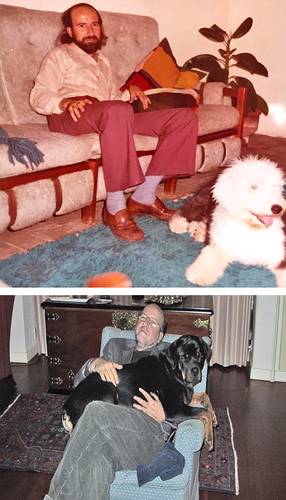Monica Mateos-Vega
The federal Ministry of Culture, through the National Institute of Anthropology and History (INAH), paid tribute to museographer Miguel Ángel Fernández Villar, who died on July 12 at the age of 78. With a long applause from colleagues, friends and family, his ashes were received in the Jaime Torres Bodet auditorium of the National Museum of Anthropology, where the ceremony was held.
My father left full of tranquility and fullness
said his daughter Carla Fernández when recalling the professional career of the also writer and historian who he lived for the museums of Mexico, so much so that during my early childhood they sent for my parents to be called to kindergarten because I claimed to live in the Chapultepec Castle museum. When they arrived at the appointment, they both agreed, because my father was then the director of said museum and I considered that to be my home, I don’t think I was wrong: the museums and archaeological sites of Mexico were and will continue to be part of our family history.
.
He added that his father, through the exhibitions he organized “showed the greatness of pre-Columbian civilizations, as well as that of colonial and independent Mexico. He lived for the immeasurable aesthetic and cultural quality of our country’s art.
“As an intellectual he found his voice and expression in exhibition design. He was the owner of a highly sensitive, heterogeneous and current vision. He presented Isis together with the plumed serpent and thanks to him many people were able to meet the Phoenicians, the Sian warriors, the Greeks and the Renaissance classics in the museums of Mexico.
“He also took our culture abroad, making it possible for Mexico to recover everything that was its own. He gave us the necessary confidence to recognize our country as one of the most advanced, refined and complex cultures in the world, owner of an art as unique as it is cosmic.
Archaeologist Eduardo Matos Moctezuma stated that his friend Miguel Ángel Fernández Villar he knew with mastery, culture, knowledge and with a sensitivity that was on the surface, to know the language of what was in his hands to show it to anonymous people who could thus understand the message that they were carriers
.Photo courtesy of INAH
“One of my favorite exhibitions was Gods of ancient Mexico. In this exhibition, the complexity and validity of the Mesoamerican pantheon was shown in all its splendor, evidencing its enormous respect for nature and the importance of female goddesses.
Dad studied the past to provide us with a way to understand the present and improve the future. He said that you have to learn from the best and, for him, Mexican art was the best of all. He was the author of more than 20 books and died writing about the origin of museums, he had the desire to interest the youngest in ancient history so that they would bring it to the world of the living. He shared the desire of all museums: to be a place where ideas are shared, planted and grow
expressed Carla Fernandez.
The archaeologist Eduardo Matos Moctezuma affirmed that his friend Miguel Ángel Fernández Villar he knew with mastery, culture, knowledge and with a sensitivity that was on the surface, to know the language of what was in his hands to show it to anonymous people who could thus understand the message that they were carriers
.
He explained that he worked with him on several projects, one of them was in the Museo del Templo Mayor, where Miguel Ángel was assigned give the breath of life to the objects produced by the archaeological excavation
.
Fernandez Villar said that good museums are those that are made from the inside out, where their contents have been thought through before their containers are built
Matos quoted and added: The saying was fulfilled
.
Diego Prieto, director of the INAH, Teresa Franco, Miguel Fernández Félix, José Enrique Ortiz Lanz, Salvador Rueda Smithers and the head of the SC, Alejandra Frausto, also participated in the tribute, who stood guard of honor before the urn with the ashes of the museographer .
